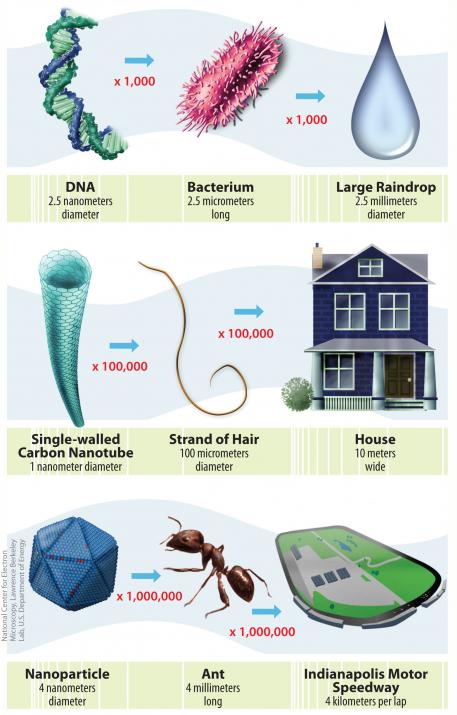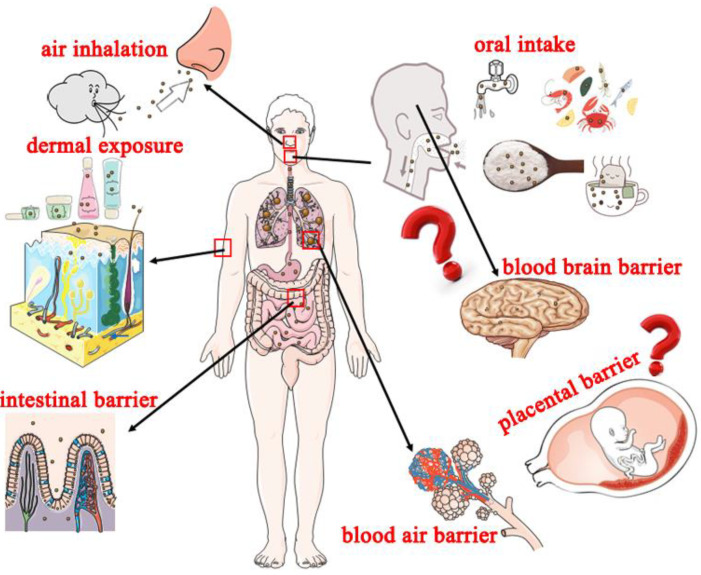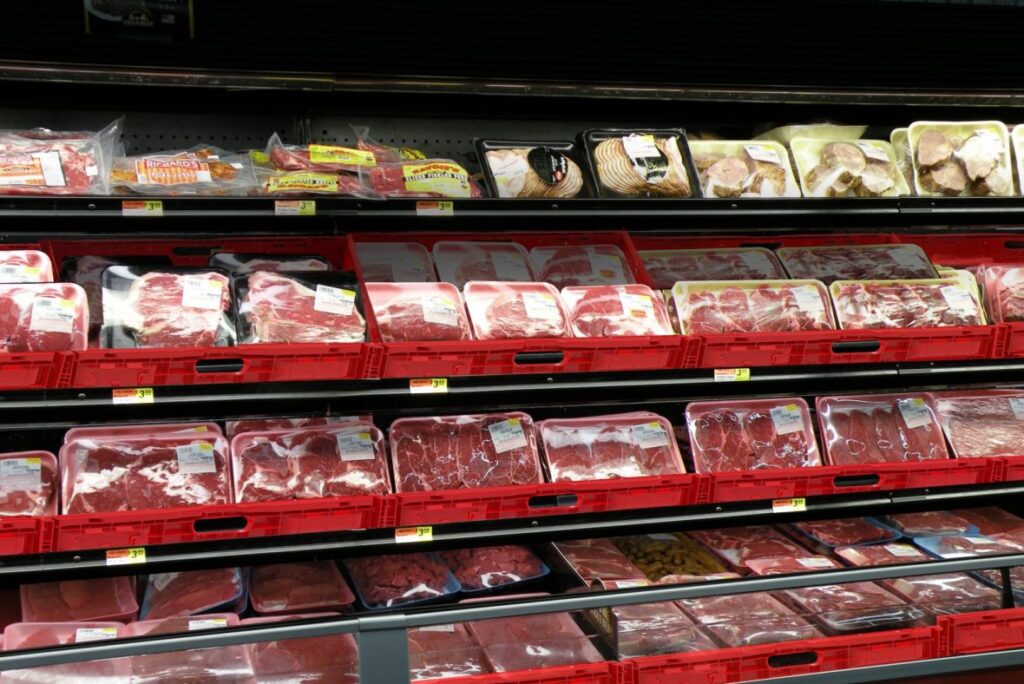Nanoplastics are plastic particles that range in size from 1 nanometer (nm) to 1 micron (µm). These units of measure are so small that it helps to think about them in terms of everyday objects. For example, the thickness of a sheet of paper is about 100,000 nm or 100 µm. A human hair is even smaller and has a diameter of about 80,000 nm or 80 µm.
So how small is a single nanometer or a single micron? You’ll have to turn to biology.
- One nanometer is about the length your fingernail grows in a second.
- One micron is about the length of a very small bacterium.
You can’t see either of these things with your naked eye, so you can’t see nanoplastics without a microscope.
The Big Deal About Small Things
You can’t see them while you’re eating, but nanoplastics are in your food. So are microplastics, larger-sized particles that are less than 5 millimeters (mm) in diameter. Visually, one millimeter is about the thickness of the size of a sesame seed. That’s still pretty small.
Like microplastics, nanoplastics are also in the air we breathe and the water we drink. They’re in soil and seawater, too. It doesn’t matter whether you’re a carnivore, an omnivore, a vegetarian, or a vegan. If you eat, drink, or breathe, nanoplastics could affect you.
It’s important to understand this because some people claim that microplastics and nanoplastics are reasons to avoid meat. But there are plastic particles in fresh fruits and vegetables, too. In fact, according to a study in Environmental Science, apples and carrots contained over 100,000 microplastics particles per gram. That doesn’t sound healthy.
But what do nanoplastics actually do to human health? And how do they enter the meat supply, an area that’s of special interest to us here at Go Natural Education? Let’s examine both questions.
Human Health
In Nanoplastics and Human Health: Hazard Identification and Biointerface, a team of researchers summarize the results of recent research and state plainly that “humans are subjected to long-term (almost whole-life) exposure to nanoplastics at low concentrations.” But what are these low concentrations specifically? For that matter, how many nanoparticles does the average person ingest each year? Is any amount safe to ingest? Unfortunately, more research is needed to answer these basic questions.
What researchers do know is that ingested nanoplastics accumulate in a part of the intestines called the lumen. From there, they are excreted through feces or enter the blood stream. Nanoplastics can cause the destruction of cellular membranes, but perhaps the greater risk is how they may interfere with mitochondria. These subcellular structures are responsible for metabolism, the process of converting food into compounds that cells can use to perform their basic functions. This 2022 study describes research in this area, but also cautions that much is still unknown.
In addition, both microplastics and nanoplastics (MNPs) are emerging as potential risk factors for cardiovascular disease in preclinical studies. In a study reported in The New England Journal of Medicine, “patients with carotid artery plaque in which MNPs were detected had a higher risk of a composite of myocardial infarction, stroke, or death from any cause at 34 months of follow-up than those in whom MNPs were not detected.”
The Meat Supply
Like humans, cows have intestinal lumen and a cellular structure that includes mitochondria. Yet cows also have multiple stomachs, an important difference from people. Regardless, cows ingest nanoplastics when they eat grass that’s grown in soil where plastic particles are present. Fruits and vegetables also absorb these particles from soil, so people who don’t eat meat still ingest nanoplastics.
With the meat supply, the woven polypropylene bags that are typically used for animal feeds are another potential source of plastic particles. Plus, fresh meat is usually packaged in plastic trays and over-wrapped with a transparent or heat-shrink film. Often, the tray is made of expanded polystyrene, a foam material. The film is blown with a gas, and the film itself may outgas onto the meat’s surface.
Are you concerned about nanoplastics in your food? Remember that they’re not only found in meat, and that fruits and vegetables also contain them. Animal feed bags and plastic packaging are things the meat industry can change, but the problem is bigger than any one industry.


